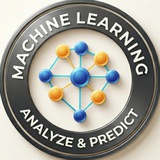Topic: Handling Datasets of All Types – Part 1 of 5: Introduction and Basic Concepts
---
1. What is a Dataset?
• A dataset is a structured collection of data, usually organized in rows and columns, used for analysis or training machine learning models.
---
2. Types of Datasets
• Structured Data: Tables, spreadsheets with rows and columns (e.g., CSV, Excel).
• Unstructured Data: Images, text, audio, video.
• Semi-structured Data: JSON, XML files containing hierarchical data.
---
3. Common Dataset Formats
• CSV (Comma-Separated Values)
• Excel (.xls, .xlsx)
• JSON (JavaScript Object Notation)
• XML (eXtensible Markup Language)
• Images (JPEG, PNG, TIFF)
• Audio (WAV, MP3)
---
4. Loading Datasets in Python
• Use libraries like
• Use libraries like
---
5. Basic Dataset Exploration
• Check shape and size:
• Preview data:
• Check for missing values:
---
6. Summary
• Understanding dataset types is crucial before processing.
• Loading and exploring datasets helps identify cleaning and preprocessing needs.
---
Exercise
• Load a CSV and JSON dataset in Python, print their shapes, and identify missing values.
---
#DataScience #Datasets #DataLoading #Python #DataExploration
https://t.iss.one/DataScienceM
---
1. What is a Dataset?
• A dataset is a structured collection of data, usually organized in rows and columns, used for analysis or training machine learning models.
---
2. Types of Datasets
• Structured Data: Tables, spreadsheets with rows and columns (e.g., CSV, Excel).
• Unstructured Data: Images, text, audio, video.
• Semi-structured Data: JSON, XML files containing hierarchical data.
---
3. Common Dataset Formats
• CSV (Comma-Separated Values)
• Excel (.xls, .xlsx)
• JSON (JavaScript Object Notation)
• XML (eXtensible Markup Language)
• Images (JPEG, PNG, TIFF)
• Audio (WAV, MP3)
---
4. Loading Datasets in Python
• Use libraries like
pandas for structured data:import pandas as pd
df = pd.read_csv('data.csv')
• Use libraries like
json for JSON files:import json
with open('data.json') as f:
data = json.load(f)
---
5. Basic Dataset Exploration
• Check shape and size:
print(df.shape)
• Preview data:
print(df.head())
• Check for missing values:
print(df.isnull().sum())
---
6. Summary
• Understanding dataset types is crucial before processing.
• Loading and exploring datasets helps identify cleaning and preprocessing needs.
---
Exercise
• Load a CSV and JSON dataset in Python, print their shapes, and identify missing values.
---
#DataScience #Datasets #DataLoading #Python #DataExploration
https://t.iss.one/DataScienceM
❤3👍2
